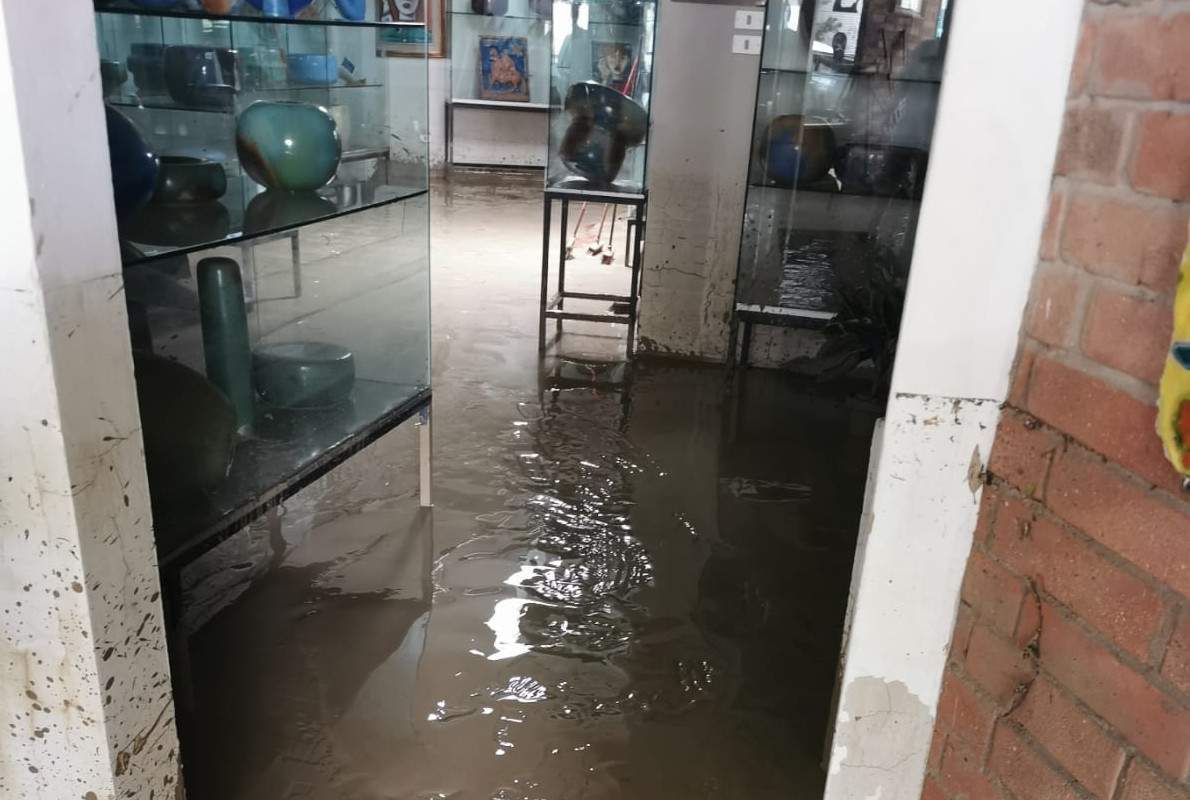The Emilia-Romagna Region is working on a reconnaissance of the damage to cultural heritage that occurred as a result of theflood that hit the region, and in particular Bologna and Romagna. It is premature to make an overall assessment of the damage affecting museums, libraries, archives, illustrious houses, monuments and archaeological sites. At a first reconnaissance, however, there are numerous and widespread contexts of concern and on which it will be necessary to intervene, after the priority for the safety and security of the affected population. Hydrogeological instability has caused the loss of important trees in historic parks and gardens.
In Bologna, damage is reported in the Villa Spada Gardens due to a landslide, while the library has been closed for several days for the same reason. Also in Bologna, damage is reported at the Medieval Museum where the basement floor flooded, currently affected by water suction operations, without, however, damage to the works.
In Romagna, damages refer to landslides, uprooting, flooding, and ongoing flooding. In the Apennines many and significant damages to historic parks and gardens. Severe damage in Casola Valsenio (Ra), at the Giardino del Cardello - Casa Oriani where the pond overflowed, landslides and uprooting of trees were reported, as well as in Brisighella (Ra) at the Garden of Villa Ginanni Fantuzzi. While in Tredozio (FC), the Garden of Palazzo Fantini is threatened by numerous landslides and mudslides in the area. The palace has suffered flooding to the cellars and water seepage from the roofs. Torre Fantini is affected by a minor landslide.
The most critical situation is in Faenza, where the Guerrino Tramonti Museum suffered severe damage to the building, with flooding of the basement storage room-which consists of 1,800 works including ceramics and canvases-completely submerged, while the museum flooded up to an elevation of 30 cm causing much damage. The MIC-Museo Internazionale della Ceramica in Faenza made itself available to house the damaged ceramic holdings of the Tramonti Museum in the spaces of its restoration laboratories. Damage also at the Zauli Museum, flooded on the ground floor and in the cellar where Carlo Zauli’s clays are kept, as well as the garden with the sculptures, submerged like the street in front of it (remember that at the rime of May the Bottega Gatti warehouse was flooded). In the Manfrediana Library, water reached a meter in height. Water in the Church of San Francesco.
Also in Ravenna, inLugo, theLugo Photographic Archive went under water with partial damage to the photographic assets. Unfortunately, water also heavily reached the Teatro Rossini with substantial damage that will have to be ascertained.
In Classe, The Classis Museum was temporarily equipped as a hub to accommodate the population displaced from homes near the United Rivers rival at the confluence of Ronco and Mutton.
In Bagnacavallo, in the first wave in early May, the Museo delle Cappuccine had experienced flooding of the storage room with damage to six frescoes.
Apprehension also for the situation in Cesena where seepage was recorded in the Malatestian Library, while at theAbbey of S. Maria del Monte there was a serious collapse and the situation is of great concern. Major criticalities also in Gambettola at Casa Fellini and in Sorrivoli, where the house is almost uninhabitable, while the entire village is displaced and isolated.
A lot of damage also in Forlì, precious cinquecentine at the Seminario Nuovo were reached by the water and mud and operations are being set up to get them to safety. Also flooded are the Forlì library depot and the libraries of Sant’Agata sul Santerno and Solarolo.
The Emilia-Romagna Region, in close and continuous contact with the Superintendencies of Ravenna and Bologna and with the Emilia-Romagna Regional Secretariat, will continue to collect reports and provide useful indications for the rescuers to intervene to save the cultural heritage.
The Department of Culture is also providing advice and contacts, to institutions and families, on how to carry out initial interventions to save the property.
Pictured is the Guerrino Tramonti Museum in Faenza. Photo: Emilia-Romagna Department of Culture.
 |
| Emilia-Romagna flood, region's first reconnaissance of damage to cultural heritage |
Warning: the translation into English of the original Italian article was created using automatic tools. We undertake to review all articles, but we do not guarantee the total absence of inaccuracies in the translation due to the program. You can find the original by clicking on the ITA button. If you find any mistake,please contact us.